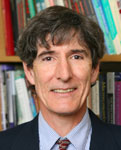Ben Bernanke’s term as chairman of the Federal Reserve ends on January 31, 2014. Any uncertainty over whether he would be reappointed by President Obama was eliminated when the president said recently that Chairman Bernanke has “already stayed a lot longer than he wanted or he was supposed to.”

But while uncertainty over Bernanke’s future at the Fed has been eliminated, there are several ways in which the Fed is creating uncertainty that could hold back the recovery:
1: A new Fed chair
During the Greenspan years, it was clear that a single individual, Chairman Greenspan, largely controlled the Fed. Chairman Bernanke has worked hard to try to change the way the Fed operates so that no one person, even the chair, has a dominant voice in policy. It’s the institution that matters the most, not the individuals within it.
But despite this attempt to refocus attention away from the chair, the outside world believes that policy is largely dictated by the chair’s wishes. Thus, uncertainty over who will be the next Fed chair translates into uncertainty about how policy will be conducted, and that uncertainty could harm the already too slow recovery.
Right now we need continuity, not change and uncertainty, and I wish Bernanke would realize this and stay on for another term. Failing that, the next chair – hopefully the stable transition to Janet Yellen – should be announced quickly.
2: Guidance on when quantitative easing will end/expand/taper
Anyone who has been following the Fed recently knows that it has fared poorly in its attempts to provide guidance on when quantitative easing will begin tapering off, and this has translated into uncertainty over both interest rate and quantitative easing policies. The Fed does not seem to understand how anxious it has appeared to return policy to normal over the last several years.
Any sign of “Green Shoots,” such as the supposed sighting in 2009 by Chairman Bernanke, prompts the Fed to announce that it is developing an exit strategy. With that background, combined with the public perception that the Fed is itching to reverse course and get back to normal, members of the Fed should not be surprised when markets “misread” talk about when the Fed is planning to reverse course. When Fed communication is adding uncertainty instead of reducing it, that’s a big problem.

3: Overly optimistic forecasts
This is related to the Fed’s communication problem. One of the reasons people believe the Fed can’t wait to return policy to normal is that it has continually adopted overly rosy forecasts that avoid the tough decision to do more to help the economy. Better times are just around the corner, we are told, and if anything we need to think about exit policies.
Then, when things turn out much worse than forecast, the Fed has to reverse itself. It has eased policy after these episodes in some cases and that creates quite a bit of uncertainty over Fed policy. What the Fed says and what it does have not always been in perfect alignment in recent years, and that is one of the reasons markets do not seem to fully believe the Fed’s recent communications.
4: Churning at the Board of Governors
Members of the Board of Governors are appointed for terms of fourteen years, and they cannot be reappointed. Since one term ends every two years, no single president can appoint more than two of the seven members of the Board of Governors in a four-year term and radically alter the composition of the Fed. This should lead to more certainty over the course of policy over the long timeframes that many investors care about, and that should, in turn, translate into more investment and growth.
But in recent years, this is not how the system has worked. Members of the Board of Governors routinely resign to pursue lucrative private sector opportunities, or for other reasons, and both President Bush and President Obama have been able to appoint all or nearly all of the seven member Board.
Fortunately, this has not translated into policy whipsaw to a significant degree, but there is still uncertainty over the future. As Bernanke is replaced, and as the board quickly changes its composition, will policy also change drastically? Can we be sure that the future Fed will honor the promises the Fed makes today? The solution to this is simple. Board members should understand and honor the fourteen year commitment they make when they sign up for the job.
Regulators still haven’t finished the task of writing the rules and regulations that are needed to stabilize the shadow banking sector, but in this case I want to defend the Fed, at least in part. I don’t believe that uncertainty over bank regulation is a major factor in holding back the recovery as some members of the GOP claim. The real uncertainly here is the degree to which politically powerful large financial institutions can thwart the regulations needed to minimize the chances of another costly meltdown.
Uncertainty over Federal Reserve policy is not the major factor holding back the recovery. The drag on the economy from deficit reduction, for example, is likely a bigger factor. But that doesn’t mean it’s harmless, and reducing uncertainty over the course of policy arising from communication problems, overly rosy forecasts, rapidly changing membership, and changes in leadership would certainly help.






